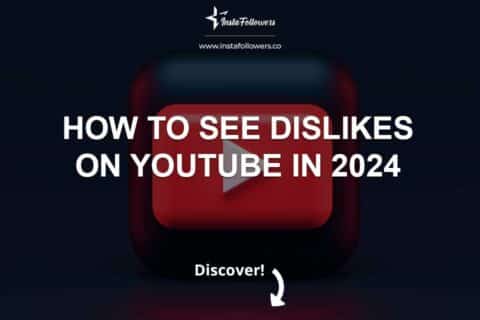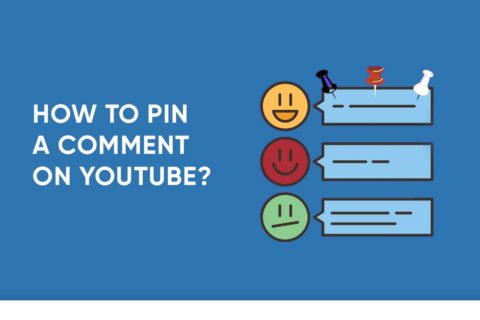In addition to being one of the most popular sites in the world, YouTube is also one of the most popular live broadcast platforms for gamers, vloggers, and more. In that case, you might want to do your live broadcasts on YouTube on your own. Livestreaming has emerged as a powerhouse for engagement, community building, and content delivery. While many creators are familiar with the concept of hosting live events on YouTube, there’s a relatively uncharted territory that holds immense potential – YouTube 24/7 live stream.
Imagine having a channel that never sleeps, where viewers can tune in at any hour of the day or night to watch your content. A YouTube 24/7 live stream is a unique and exciting way to reach a global audience, provide round-the-clock entertainment, and maintain a constant presence in the digital landscape.
In this guide, we will delve into the fascinating world of how to make a 24/7 YouTube live stream. We will explore the step-by-step process to set up your continuous broadcast. Whether you’re a gaming enthusiast, a music producer, a vlogger, or a business owner, it does not matter.
How to Do Live Streams on YouTube
You can always strive to make your videos and live streams more quality than ever before, and you may need the help of a third-party tool to do the job for you.
However, if you are at the beginner level for both of these operations and settings, you may find it a bit complicated. For this, we leave you with our article as a starter kit.
YouTube Livestream on Mobile
It’s time to investigate how to make a 24/7 YouTube live stream utilizing your mobile device now that you’re enthusiastic about the idea. With mobile livestreaming, you may broadcast from any location with an internet connection, which gives ease and flexibility. We’ll walk you through setting up and managing your YouTube livestream on a mobile device in this section. However, you should keep in mind that you must have at least 1000 subscribers to create a YouTube 24/7 live stream. Here are the steps you should follow:
- First, you should open the YouTube Application.
- In the top-right corner of the screen, you’ll find a camera icon. You can tap on it to initiate the live stream setup.
- From the available options, you can choose “Go Live” to begin configuring your live stream.
- You should write a compelling title for your livestream. This title will appear to your viewers and should give them an idea of what to expect.
- Once you’re satisfied with your settings, tap the “Go Live” button to start broadcasting to your audience.
YouTube Livestream on Computer
While mobile devices offer convenience, livestreaming on a computer can provide greater control and a more robust setup. In this section, we’ll guide you through the process of setting up and how to make a 24/7 YouTube live stream using your computer. Whether you’re a gamer, educator, or business professional, this method provides a more comprehensive livestreaming experience with added features and capabilities.
Setting Up a Computer Livestream

- YouTube Studio: The first thing to do is go to the YouTube Creator Studio by clicking on your profile picture in the top right corner of the YouTube homepage. Then, selecting “YouTube Studio.”
- Livestreaming Tab: In the YouTube Studio, you can navigate to the “Content” section on the left sidebar and select “Live” to access the live streaming tab.
- Create Stream: Click on the “Create” button to start adjusting your live stream.
- Stream Details: Fill in the details for your live stream, including the title, description, and privacy settings (public, unlisted, or private).
- Schedule Stream: You can schedule your live stream for a future date and time or choose to go live immediately.
- Stream Preview: You should review your settings and ensure everything is in order before going live.
- Go Live: You can click the “Go Live” button to start your livestream. You can now interact with your audience, share your content, and engage in real-time.
If you experience a problem, you can contact YouTube Support.
Ending Your Livestream
When you’re ready to finish your live stream, simply click the “End Stream” button. You’ll have the option to save the video as an archive on your channel for viewers to watch later.
Livestreaming on your computer provides a robust and versatile platform for content creators and professionals. It offers greater control over your live stream and access to advanced features that can enhance your viewer’s experience. Also, don’t forget the fact that you can download your streams and save them for later with our brand-new YouTube Video Downloader. You can also check the YouTube Thumbnail Downloader tool.
Use OBS to Broadcast Live Videos
The live broadcasting program OBS, which is mostly used by video gamers, is one of the most popular tools in its own lane. And it doesn’t require much from your end to do live broadcasts on YouTube.
Capturing your screen is easier than ever with this third party, but we always recommend that you read the application’s manual before you proceed if you wish to get a professional result.

Confirm YouTube Channel
You need to confirm your YouTube account before all these actions. If you’ve already done so, we can move on to our step-by-step YouTube live-streaming guide.
- As mentioned above, if you do not approve your YouTube account with a phone number, you will not be able to broadcast live on YouTube in any way.
- Once you’ve entered your account, click your profile photo in the upper right and click the “Content Studio” tab. You will see the Live Stream option in the left tab; once you’ve turned on that option, click the “Live Now” button.
- When you come to the live broadcast menu, you will see some options. These are settings that you can edit as you like, such as the publication name and description. This section will require many different guides. However, if you’d like a quick explanation, you can try the YouTube Live Guide.
- If you’re done with your personal settings, you can see the Stream switch at the bottom. Here, you should find a password, and we will use it in the OBS settings in the future. Don’t forget to write it down, or you can copy it to your clipboard. But be careful not to share this password with anyone; if it is in the hands of someone else, someone else can easily broadcast with your account.
- Download and install the app from the OBS’ official website to do live broadcasts on YouTube. If the installation is complete, run the program as an administrator and click the Settings section.
- On the Video and Audio tabs, enter your own settings such as best resolution, bit-rate. If you don’t know the best settings available for you, you can check out the guide published by Google here.
- Select “Broadcast” on the left in the settings and select the “YouTube/YouTube Gaming” menu in the Broadcast Service option.
- We need to enter the key we just noted in the fourth step of this guide. With this switch, we synchronize OBS with our YouTube broadcast. So everything that happens in OBS automatically gets published by YouTube.
- Confirm all settings and exit.
Setting Up Your Microphone & Camera
- If you want your audience to hear you while you do your thing, don’t forget to choose your microphone as input from the audio settings.
- If you want your image to appear at the same time, click the Plus tab in the Resources option again and be sure to add the “Image Capture Device” option.
- Select the camera you want to use from the options that appear, then confirm and exit.
Start Broadcasting
Once you have made all these settings correctly, you can start broadcasting. Good publications to anyone who wants to try it already! Moreover, you can buy YouTube live views to attract people.
How to Use TriCaster to Live Videos
It has become very easy to broadcast a recorded/captured video live on social media or video-sharing sites instead of real-time streaming.
You can broadcast live from popular media sites like YouTube, Akamai, Ustream, and Wovza via TriCaster.
Two critical points to be aware of in order to do live broadcasts on YouTube are the encoding process and internet infrastructure.
Broadcasting Without an Encoder
Video feeder is a device that converts the video signal to an IP signal and sends it to any server or CDN account in the internet environment. TriCaster has a built-in video feeder and a built-in encoder.
Since its initial launch in 2005, YouTube has continuously improved its features to enhance YouTube users' experience and help content creators engage...
YouTube attracts thousands of viewers hourly to watch videos and talk about their interests. Therefore, if you consider a new career as a YouTuber or ...
That’s why when you publish on YouTube via TriCaster, you do not need an external encoder.
- In TriCaster encoder processing, RTMP streaming can be performed in H.264 (ex. Adobe® Flash® Media Server), Microsoft® Windows Media® Push/Pull, and browser-based streaming applications.
- When you stream to your YouTube channel, you need to open your YouTube page and create a new live stream and make simple adjustments, such as the name of the stream you created and the start time.
- Then, in the profile specified by YouTube, you need to create your stream and get the stream address and ID at the next stage.
- Next, all you need to do is write your stream address and ID into the encoder settings in TriCaster.
- Then you need to specify the video resolution you will stream. The most crucial point to note here is your internet upload speed. For example, if you set the resolution to 720p, you need a minimum internet upload speed of 3 megabits.
- When you make these settings on TriCaster, you can set the resolution, add graphics such as logo, or subtitle onto the video and start the streaming process.
If you want to know more about YouTube algorithm, please check our out article about it.
24/7 YouTube Live Streaming Steps
Even while live events are nothing new, the idea of a YouTube 24/7 live stream presents a distinctive and alluring way to connect with a worldwide audience. Using third-party software, such as OBS (Open Broadcaster Software) or OhBubble, as well as painstakingly preparing and controlling the content, are required to accomplish this type of content. Here, we’ll look at how to set up a YouTube livestream that runs constantly.
Creating a 24/7 livestream on YouTube involves several crucial steps. To begin, you’ll need a dependable VPS (Virtual Private Server) hosting solution, with OhBubble being a popular choice due to its various plans and impressive uptime. Alternatively, Vultr is another viable option. Once you’ve selected your hosting provider, download a program called AnyDesk, which is included with OhBubble and will allow you to connect to your VPS. Within the VPS, you’ll find OBS and Streamlabs pre-installed. Streamlabs, a free streaming software, comes with useful presets. To set up your livestream, retrieve your YouTube stream key, which you’ll paste into Streamlabs. Customize your stream by adjusting video settings, thumbnails, backgrounds, and music. For continuous streaming, remember to enable the loop feature in the settings. Finally, click the “start streaming” button in Streamlabs, and your 24/7 YouTube live stream will be up and running, providing uninterrupted content for your viewers.
Pros of Livestreaming
Livestreaming offers numerous advantages, including real-time interaction with viewers, a wider global reach, instant feedback, monetization opportunities, and diverse content options. It provides authenticity, fosters community building, and is a powerful marketing tool. Livestreams are ideal for educational purposes, have a low barrier to entry, and offer evergreen content through video-on-demand. They can also capture and broadcast global events, facilitate collaborations, and provide valuable data analytics for content improvement and audience targeting. In essence, a 24/7 YouTube live stream is a versatile and engaging medium that connects creators and businesses with their audience, promotes products or services, and builds a loyal community.
Conclusion: Power and Potential of Livestreaming
In conclusion, livestreaming is a dynamic and versatile medium transforming how content creators and businesses engage with their audiences. With its real-time interaction, global reach, monetization potential, and diverse content options, it has become an essential tool in the digital era. Livestreaming’s authenticity, community-building capabilities, and marketing prowess make it a valuable asset for those seeking to connect, educate, entertain, and inform. Its accessibility, evergreen content potential, and ability to capture global events add to its allure. Today, we prepared a comprehensive guide on how to make a 24/7 YouTube live stream so that you can improve your channel and your channel’s quality. As livestreaming continues to evolve, it remains a driving force in shaping the digital landscape and fostering meaningful connections between creators and their viewers.









1 Comment
Doing a Youtube live broadcast is not as difficult as it looks like. Thanks for the information though.